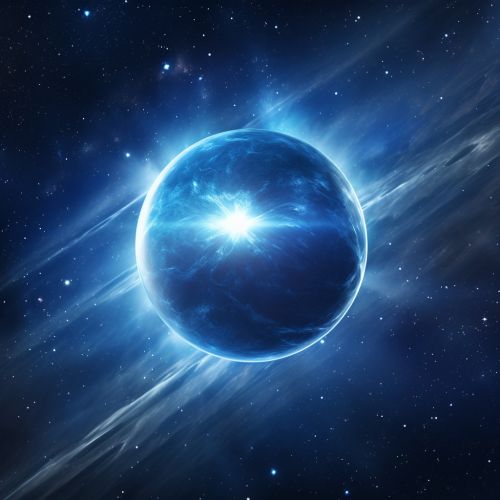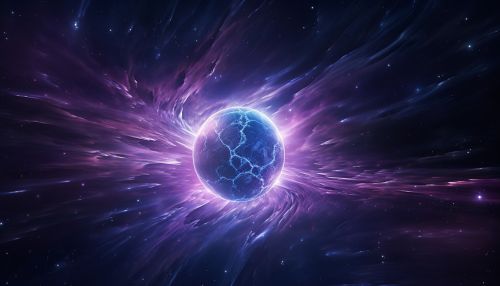Neutron stars
Introduction
A neutron star is a celestial object of extremely high density composed predominantly of closely packed neutrons. Neutron stars are a result of the gravitational collapse of a massive star during a supernova event. Despite their small size, with a radius of about 10 kilometers, they have masses between 1.1 and 2.4 times that of the sun.


Formation
Neutron stars are formed from the remnants of massive stars after they explode in supernovae. When a star with approximately 10 to 29 solar masses exhausts its nuclear fuel, it undergoes a catastrophic collapse under its own gravity. This collapse causes the outer layers of the star to explode in a supernova, leaving behind a dense core that continues to collapse. This core collapse is so intense that protons and electrons combine to form neutrons, hence creating a neutron star.
Structure and Composition
Neutron stars are composed almost entirely of neutrons, which are subatomic particles with no net electrical charge. They are held together by gravity, and are extremely dense and compact. A sugar-cube-sized amount of neutron-star material would weigh about as much as a mountain on Earth. The surface of a neutron star is very smooth, with any irregularities measuring no more than a few millimeters in height.
Properties
Neutron stars have several unique properties that set them apart from other celestial bodies. They have incredibly strong magnetic fields, billions of times stronger than Earth's. They also have very high rotation speeds, with some neutron stars, known as pulsars, rotating hundreds of times per second. Furthermore, neutron stars have a very high temperature, with their surfaces reaching up to a million degrees Kelvin.
Types of Neutron Stars
There are several types of neutron stars, classified based on their properties and behaviors. These include:
- Pulsars: These are highly magnetized neutron stars that emit beams of electromagnetic radiation. The radiation is only visible when the beam of emission is pointing towards the Earth, much the way a lighthouse can only be seen when the light is pointed in the direction of an observer.
- Magnetars: These are a type of neutron star believed to have an extremely powerful magnetic field, the decay of which powers the emission of high-energy electromagnetic radiation, particularly X-rays and gamma rays.
- Neutron Star Binaries: These are systems in which two neutron stars orbit around their common center of mass.
- Isolated Neutron Stars: These are neutron stars that do not have any companion star and are not emitting strong radiation, making them difficult to detect.
Neutron Stars and Gravitational Waves
The collision of two neutron stars is believed to be a source of gravitational waves, ripples in the fabric of spacetime that were first predicted by Albert Einstein in his general theory of relativity. In 2017, scientists detected gravitational waves produced by the merging of two neutron stars in a galaxy about 130 million light-years from Earth. This event, known as a kilonova, also produced a short gamma-ray burst and was observed across the electromagnetic spectrum, marking a significant milestone in multi-messenger astronomy.
